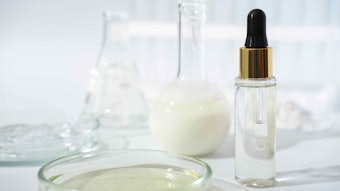Researchers in Africa have discovered pain relief benefits in a poisonous shrub. Omeh Jusef and Ezeja Maxwell from the Michael Okpara University of Agriculture in Umudike, Nigeria, found that an extract of Jatropha curcas may have a different mode of action than conventional analgesics. Their findings are published in “The evaluation of the analgesic activity of the methanolic leaf extract of Jatropha curcas (Linn) in experimental animals,” which appeared in the June 2011 issue of the International Journal of Biomedical Engineering and Technology.
J. curcas, also known as the “physic nut,” is a perennial shrub that grows to 5 m high and belongs to the Euphobiaceace family. It is native to Central America but grows widely in other tropical and subtropical countries of Africa and Asia. The plant’s fruit is combined with the stem bark of Cochlospermum planchonii in Nigerian medicine for treating diabetes mellitus and is also used traditionally as a painkiller. Other medicinal activities have been reported. The plant’s seeds have been used for making soap, candles, detergents, lubricants and dyes and the seed oil is used in biodiesel.
The researchers extracted what they believed to be the physiologically active components of the leaves of J. curcas using methanol as solvent. They compared the effects of this extract at 100, 200 and 400 mg/kg, against 400 mg/kg of acetylsalicylic acid (aspirin) in standard laboratory animal tests for assessing the strength of painkillers. The drugs were orally administered to mice and rats, in which they assessed the pain reaction time. They found that 100 mg/kg was an inadequate dose, however, 200 and 400 mg/kg doses produced analgesia comparable to aspirin, affirming the use of the plant for pain relief in traditional medicine. This was hypothesized based on an dose-dependent increased pain reaction time in mice and rats given the extract. The team suspect that the extract may be acting through both peripheral and central pain mechanisms.
Yusuf and Maxwell are isolating and characterizing the active ingredient in the extract and determining the precise mode of action. The research did not mention topical application of the extract; however, perhaps topical pain relief could be an additional application.










